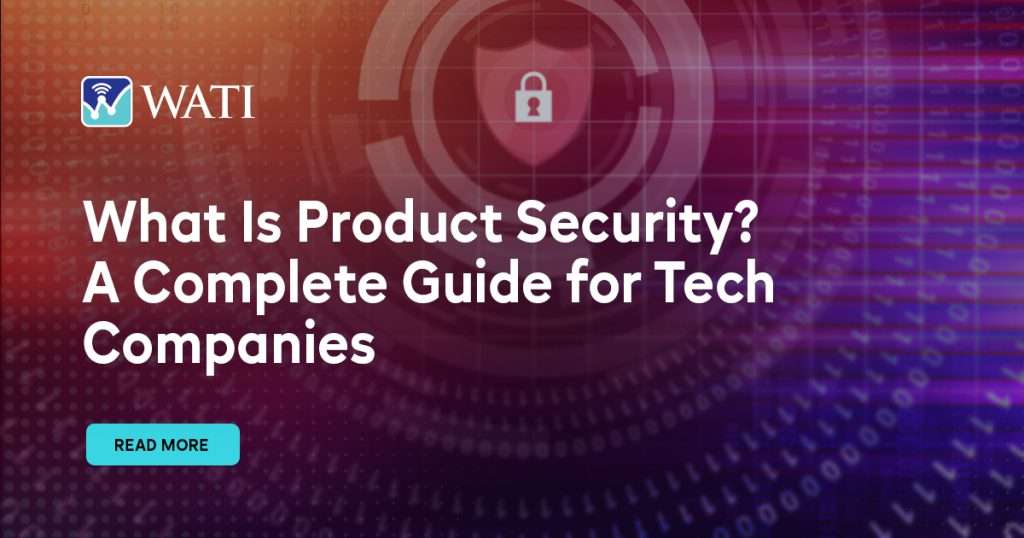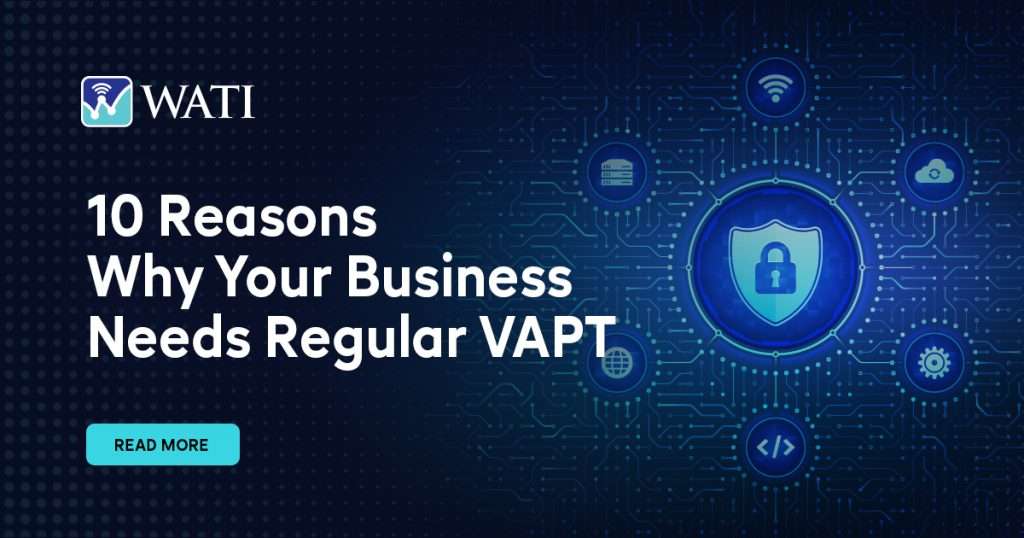Data has become the new currency — and cybercriminals know it. Every second, digital transactions, communications, and operations take place across interconnected networks. While this connectivity has transformed how we live and do business, it has also opened the door to an alarming rise in cyber threats. From phishing scams to ransomware attacks, malicious actors continue to exploit every digital vulnerability.
Cybersecurity has, therefore, become one of the most crucial disciplines of our era. It encompasses the strategies, technologies, and practices designed to protect systems, networks, and data from unauthorized access and damage. Whether it’s a small startup, a global enterprise, or an individual user, everyone depends on cybersecurity to maintain trust and ensure digital safety.
This comprehensive guide explores everything you need to know about cybersecurity — from its definition and importance to its various types, common threats, and best practices. By the end, you’ll have a clear understanding of how cybersecurity safeguards the modern digital world and why proactive protection is no longer optional — it’s essential.
What Is Cybersecurity?
Cybersecurity refers to the collective measures and processes used to protect computer systems, networks, devices, and data from digital attacks, unauthorized access, and damage. These attacks can range from malicious code injection and ransomware to phishing campaigns and insider threats. In essence, cybersecurity is the defense system of the digital universe.
The primary goal of cybersecurity is to ensure the Confidentiality, Integrity, and Availability (CIA) of information.
- Confidentiality ensures data is accessible only to authorized users.
- Integrity guarantees information remains accurate and unaltered.
- Availability ensures that authorized users can access systems and data when needed.
Cybersecurity is a constantly evolving field. As new technologies emerge — cloud computing, AI, IoT — attackers innovate just as quickly. This dynamic nature makes cybersecurity a continuous process rather than a one-time setup. It requires regular monitoring, updates, and employee training to defend against evolving threats.
Organizations today invest heavily in cybersecurity solutions such as firewalls, encryption, multi-factor authentication, and endpoint protection. However, technology alone isn’t enough — human awareness and organizational culture are equally vital. The most secure system can still fail due to one careless click on a phishing link.
Why Cybersecurity Is Important
Cybersecurity is essential for both individuals and organizations. The consequences of cyberattacks extend far beyond stolen data — they can disrupt operations, damage reputations, and result in severe financial loss.
For businesses, cybersecurity ensures business continuity and customer trust. A single data breach can lead to lawsuits, regulatory penalties, and loss of clients. Industries dealing with sensitive data, such as healthcare, finance, and e-commerce, face even higher stakes due to compliance requirements like GDPR, HIPAA, or PCI DSS.
For individuals, cybersecurity protects personal information such as financial details, passwords, and identity data. With the rise of social engineering attacks and data leaks, maintaining digital hygiene has become a personal responsibility.
Ultimately, cybersecurity is about resilience — the ability to detect, respond to, and recover from cyber incidents swiftly. It’s not just about preventing attacks but ensuring organizations can continue operating securely even in the face of adversity.
What are the types of Cybersecurity?
Network Security
Network security protects the infrastructure of an organization’s network from intrusions and misuse. It involves implementing firewalls, intrusion detection systems (IDS), and intrusion prevention systems (IPS) to monitor and block suspicious activities. Network segmentation and secure VPNs also help limit unauthorized access and ensure safe data transmission.
Application Security
Application security focuses on securing software and web applications from vulnerabilities during development and after deployment. Common measures include code reviews, security testing, patch management, and web application firewalls (WAF). As applications increasingly move online, protecting them from SQL injection, cross-site scripting, and API exploitation has become critical.
Endpoint and Mobile Security
Endpoints — like laptops, smartphones, and IoT devices — are common entry points for cyberattacks. Endpoint security involves using antivirus software, endpoint detection and response (EDR), and mobile device management (MDM) solutions to protect these devices. With remote work on the rise, securing endpoints is now a top cybersecurity priority.
Cloud Security
Cloud security safeguards data, applications, and services hosted in cloud environments. It includes encryption, identity management, and continuous monitoring of cloud infrastructure. Shared responsibility between the provider and the user is crucial — while the provider secures the infrastructure, organizations must secure access, data, and configurations.
Data Security and Encryption
Data security ensures sensitive information is protected both at rest and in transit. Encryption, tokenization, and access controls are used to prevent unauthorized exposure or modification. In industries like finance and healthcare, where data privacy is paramount, robust encryption is non-negotiable.
Identity and Access Management (IAM)
IAM ensures that the right people have the right access to the right resources. It involves authentication (verifying identity) and authorization (defining permissions). Technologies like single sign-on (SSO), multi-factor authentication (MFA), and role-based access control (RBAC) enhance identity management and reduce insider risks.
Security Operations and Incident Response
This involves the continuous monitoring, detection, and response to security incidents. Security operations centers (SOCs) use tools like SIEM (Security Information and Event Management) systems to identify threats in real time. Incident response plans ensure swift containment and recovery when a breach occurs, minimizing damage.
Most Common Cyber Threats
Malware
Malware, short for “malicious software,” includes viruses, worms, trojans, and spyware designed to damage systems or steal information. Malware often spreads through email attachments or infected websites. Once inside, malware can corrupt files, slow performance, or grant attackers control over the system.
Ransomware
Ransomware locks users out of their systems or encrypts their data, demanding payment for restoration. It has crippled hospitals, schools, and corporations worldwide. The best defense is a mix of regular data backups, employee awareness, and endpoint protection.
Phishing Attacks
Phishing remains one of the most common and effective cyber threats. Attackers trick users into revealing sensitive information through fraudulent emails or websites. Recognizing suspicious links and verifying sender authenticity is key to prevention.
Credential Theft and Abuse
Cybercriminals often steal login credentials through data breaches, phishing, or brute-force attacks. Once compromised, credentials can be used for unauthorized access or sold on the dark web. Using strong passwords and MFA significantly reduces this risk.
Insider Threats
Not all threats come from outside. Employees, contractors, or partners can unintentionally or deliberately expose data. Insider threats often stem from negligence or misuse of privileges, making monitoring and access control vital.
AI-Powered Attacks
As AI becomes more accessible, cybercriminals use it to automate attacks, craft convincing phishing emails, and evade traditional defenses. Defensive AI systems are also emerging to counter these advanced threats.
Distributed Denial-of-Service (DDoS)
DDoS attacks flood a network or website with massive traffic, overwhelming servers and causing downtime. They’re often used to disrupt operations or extort money. Effective mitigation includes load balancing and using content delivery networks (CDNs).
What are the Benefits of Cybersecurity?
Protection Against Cyber Attacks
Cyberattacks can disrupt operations, compromise sensitive data, and inflict financial and reputational damage. Effective cybersecurity provides a robust defense against these attacks, preventing unauthorized access, malware infections, and ransomware incidents. By implementing firewalls, intrusion detection systems, and endpoint protection, organizations can detect threats early, respond effectively, and minimize the impact. This proactive approach reduces downtime, ensures operational continuity, and safeguards critical infrastructure, allowing businesses to focus on growth rather than crisis management.
Safeguarding Sensitive Information
Data is one of the most valuable assets for modern organizations. Cybersecurity measures protect intellectual property, financial records, customer information, and employee data from unauthorized access and theft. Encryption, access controls, and secure data storage prevent data breaches, while strict security policies govern how sensitive information is handled. Maintaining the confidentiality and integrity of data builds a foundation of trust with clients and partners, ensuring that sensitive information remains protected from both external attackers and internal misuse.
Mitigating Financial Losses
Cyber incidents can be extremely costly, including direct costs like ransom payments or legal fees and indirect costs such as reputational damage and lost business. Strong cybersecurity reduces the likelihood and severity of these incidents, protecting the organization’s financial health. By investing in preventative measures, risk assessments, and monitoring systems, companies can detect vulnerabilities before they are exploited, minimizing potential financial losses and avoiding the high costs of emergency remediation.
Maintaining Business Continuity
Operational disruptions due to cyberattacks can halt services, damage systems, and negatively impact customer experience. Cybersecurity ensures business continuity by creating resilient networks and systems capable of withstanding attacks. Incident response plans, regular data backups, and disaster recovery strategies allow organizations to recover quickly from disruptions. This resilience ensures that operations continue smoothly, even in the face of attempted breaches, reducing downtime and maintaining organizational productivity.
Building Trust With Customers
Trust is critical in today’s digital economy. Customers expect organizations to protect their personal and financial information. By implementing robust cybersecurity measures, companies demonstrate their commitment to safeguarding client data. This trust translates into customer loyalty, positive brand reputation, and a competitive edge in the market. Organizations that fail to secure their systems risk losing clients and damaging relationships, while those with strong cybersecurity frameworks foster long-term confidence.
Compliance With Regulations
Many industries face strict regulatory requirements regarding data security and privacy, such as GDPR, HIPAA, or PCI DSS. Cybersecurity helps organizations meet these compliance obligations, avoiding legal penalties and fines. It ensures that processes for storing, transmitting, and accessing data meet regulatory standards. By adhering to these requirements, organizations not only protect themselves legally but also demonstrate a commitment to ethical and responsible handling of sensitive information.
Conclusion
Cybersecurity is no longer optional — it’s essential for protecting data, systems, and organizational reputation. From preventing cyberattacks to ensuring business continuity, maintaining regulatory compliance, and building trust with clients, robust cybersecurity practices form the backbone of a secure digital environment. Organizations that proactively invest in cybersecurity not only defend against threats but also enable innovation, operational efficiency, and long-term growth.
In a world where a single breach can have catastrophic consequences, understanding, implementing, and continuously improving cybersecurity measures is a strategic imperative. It’s not just about technology — it’s about culture, awareness, and readiness across the entire organization.
Secure your systems, safeguard your data, and build digital trust with WATI’s expert cybersecurity services.
Protect your business from evolving cyber threats with end-to-end security assessments, real-time monitoring, and professional guidance.
Partner with WATI today — because prevention is always better than a breach.
Frequently Asked Questions (FAQs)
Cybersecurity protects computers, networks, and data from hackers, malware, and other cyber threats. It works through technologies, processes, and practices like firewalls, encryption, and monitoring to prevent attacks and unauthorized access.
Businesses face risks like data breaches, financial losses, and reputational damage. Cybersecurity safeguards sensitive data, ensures operational continuity, and builds customer trust, making it essential for any organization.
The most common threats include malware, ransomware, phishing attacks, stolen credentials, insider threats, AI-powered attacks, and DDoS attacks. These can disrupt operations or compromise sensitive information.
Use strong, unique passwords, enable multi-factor authentication, update software regularly, avoid suspicious links or downloads, and back up important data. Cybersecurity practices reduce the risk of identity theft and fraud.
Look for providers with proven experience, certified experts, a strong track record, and solutions tailored to your business needs. Evaluate services, response times, and compliance capabilities before partnering with them.
A cybersecurity service provider helps businesses protect digital assets by offering risk assessments, vulnerability testing, managed security, monitoring, and incident response. They provide expertise and tools to prevent, detect, and respond to cyber threats.
Yes, small businesses can use cloud-based security, endpoint protection, and managed security services to protect data without overspending. Cybersecurity is scalable and essential for all business sizes.
The main types include network security, application security, endpoint and mobile security, cloud security, data security, identity and access management (IAM), and security monitoring/incident response.
Cybersecurity reduces the risk of ransomware, fraud, and operational disruption. By detecting and blocking attacks early, businesses avoid direct losses, regulatory fines, and costs associated with recovery.
Effective cybersecurity combines risk assessments, security policies, employee training, technical defenses like firewalls and encryption, continuous monitoring, software updates, and a robust incident response plan.



